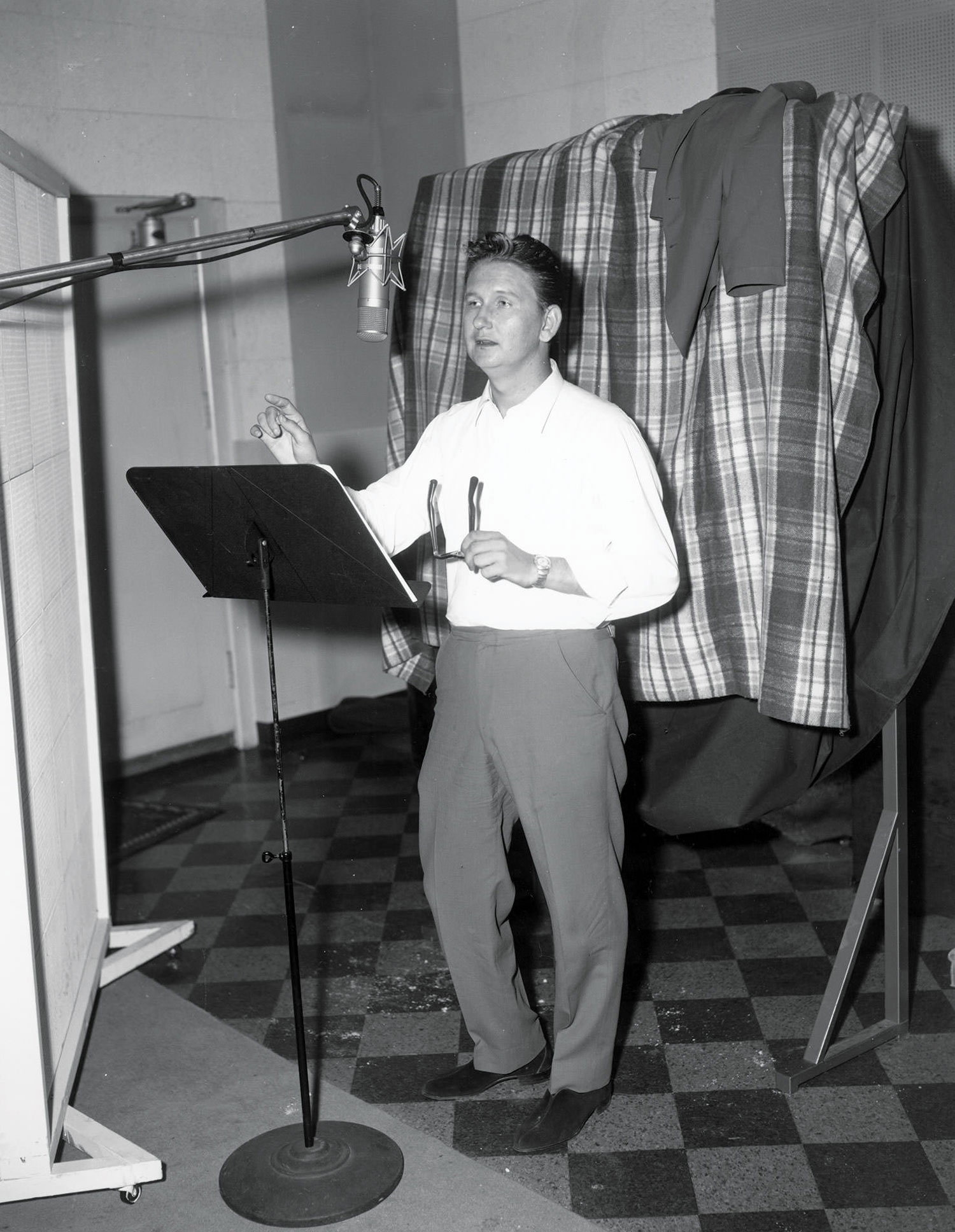Who among us hasn't wanted to take a razor blade to our tapes for no other purpose than malicious destruction? Through the ancient art of manual tape editing and splicing, you now have a practical reason for doing just that!
Basic materials for tape splicing and editing.
recording tape (basic magnetic tape, e.g. Ampex, Maxell) razor blades leader tape (white, clear) timing tape (yellow, red) adhesive splicing tape (blue, best on a weighted desk dispenser, 1" for 2" tape, otherwise) editing block (usually mounted on your console reel to reel recorder with grooves for hard cuts [vertical] or soft [diagonal]) grease pencil or china marker (white, yellow, any color that stands out against brown tape) ruler
Tape splicing and editing is essentially cutting and pasting tape by hand. It's organic and crafty. Instead of working with digital, virtual sound, you are manipulating the tape with your bare hands. In any other sense, however, there is no comparison. A comparison would be analogous to the difference between using a typewriter and a word processor. Manual splicing and editing is time consuming, and the results are irreversible. It is simply the old way: no better or worse than modern methods, only very different.
Whether you use digital or analog editing, the basic techniques of splicing and editing (leader tape, tape loops, and cut and paste editing) are essential skills for anyone who uses analog tape. Most console-style reel to reel recorders come with a factory installed editing block. It's a rectangular piece of milled aluminum or steel with one flat groove across the middle for holding the tape in place. This shallow, wide tape groove is intersected by one deeper, thin, vertical groove for cutting the tape with a razor blade (hard cuts). Next to this is a similar, but 45 degree diagonal groove (soft cuts). Most editing blocks have only these two razor grooves, but some have one more 30 degree diagonal razor groove for a super soft cut (see diagram 1).
If you have an upright reel to reel recorder or your reel to reel is not equipped with an editing block you can buy one or in desperate situations only, go without. I have gone without an editing block in a pinch and it just takes lots more manual precision. And then, only for the most basic operations like adding leader tape to the front of a master reel. If you buy an editing block you just have to mount it firmly to your workspace (as close as possible to the tape recorder and horizontally or at a low angle).
To apply leader tape, follow these procedures:
Locate the beginning (or the end) of the recorded sound on the tape, rewind (or fast forward) a little bit to insure that you won't cut into the recorded sound you want, then mark (on tape) the intended cut with grease pencil (always make the mark on the tape facing away from the side of the record/playback heads. i.e. the dull, darker brown non-magnetic tape). Place the marked segment of tape in the editing block (you can pull the tape away from the tape heads with the tape still on the reels). Align the grease pencil mark with the desired razor groove (vertical for a hard, instantaneous sound cut, or diagonal for a soft, more oblique cut). Then with a clean, swift stroke cut through the tape. Keeping the tape held in the shallow groove, match end to end (no gaps, no overlaps) then cut master tape with length of leader tape, cut the same way (see diagram 2). Using the razor blade, cut off enough blue adhesive tape to cover the splice vertically. Affix the blue adhesive tape across the cut and joined magnetic and leader tape (use the handle side of the razor blade or a fingernail to rub the adhesive tape on and to smooth out the air bubbles). Trim the blue tape from the top and bottom of the audio tape by holding the razor at an angle and sliding it along the groove that holds the tape in the splicing block.
You can cut the leader tape to any length depending on how much dead silence you want. You can experiment with timing in this way. Incidentally, timing tape is essentially the same thing as leader tape, except it's yellow or red and sometimes it's useful to differentiate between timing and leader functions. The above procedure is useful for inserting breaks in your master tape, between songs or programs. Again, leader or timing tape is essentially soundless, so you can also use it whenever you don't want tape hiss or want to permanently remove stick clicks.
Tape Loops
Before sequencers and drum machines, enterprising people made tape loops to achieve endless repetition of a given sound sequence. If you've never seen or made one, the tape loop is a disarmingly easy and logical device.
To make and playback a tape loop, follow these procedures:
(The only item you need for tape loop playback in addition to the aforementioned materials is a floating capstan or spool, mounted on a portable stand, such as a mic stand. See diagram 3.)
Find the exact beginning and end of the tape segment you wish to loop and mark the cutoff points with a grease pencil. Cut out the desired segment (see step 3 of above procedure for cutting instructions. In the case of loops, either hard or soft cuts are fine. Again, hard for a sudden attack, soft for a more gradual attack.) Make into a continuous loop (see step 4 of above procedure). Be sure loop has no twists. Splice together (see diagram 4). To play back loop: Run the loop around capstans, through place holders, and in front of tape heads as you would for normal playback operation, but run the remaining tape around the remote capstan. Pull taut-not tight, making sure the tape can move normally (see diagram 5). Press play. Tape loop will play back repetitiously at regular speed until you press stop.
Cut and Paste Editing
Say you have two takes of a song. One take has an unfixable flaw in the last section of the song. Another take however, had better results over the same section. Isolate the flawed part in the first take, cut it out and replace it with the better part from the other take and splice it on. This type of editing is obviously risky and has potential to cause serious continuity problems. But sometimes it is the only solution. This same type of edit was used famously on 'Strawberry Fields Forever.' Other uses for this technique are to edit out overly long portions of a song, mix edits, and even slicing out small pieces of tape to remove stick clicks during a sloppy drum fill!
Other more advanced techniques refined by earlier electronic music composers made use of such things as simultaneous tape deck playback: music comprised of separate parts played on separate tape decks timed to sync up by carefully measured (by ruler) lengths of leader tape. This type of music, also known as musique concrete, was originated by Pierre Schafer and Pierre Henri. Their piece, 'Symphonie Pour un Homme Seule,' is widely regarded as the first musique concrete composition. Other notable pieces done in this method include Karlheinz Stockhausen's 'Kontakte' and 'Gesang' or Iannis Xenakis' 'Orient/Occident' or 'Bohor.' Mario Davidovsky, Otto Luning and Gyorgy Ligeti have also made significant contributions to this repertoire. This music also utilized backwards tape wherein you cut out a tape segment, flip end over end, and splice in for desired backward envelope. Also artificial tremolo, achieved by cutting many equal-size segments of tape and equal-size segments of leader tape (by the use of a ruler) and splicing them together (see diagram 6).
These are very labor intensive and seemingly archaic techniques, but there are a few very good reasons to use them. If you do it a lot, your technique improves and you even discover options unavailable with a computer. In sum: If you're looking for new ways to be creative in your editing, it pays to have these options at your disposal. There is also the element of control. This kind of editing gives you a kind of 'no-turning-back' decision-making power over your recordings. Perhaps most importantly, experimentation with manual tape splicing and editing is enlightening and informs one's own understanding of how sound engineering has evolved.





